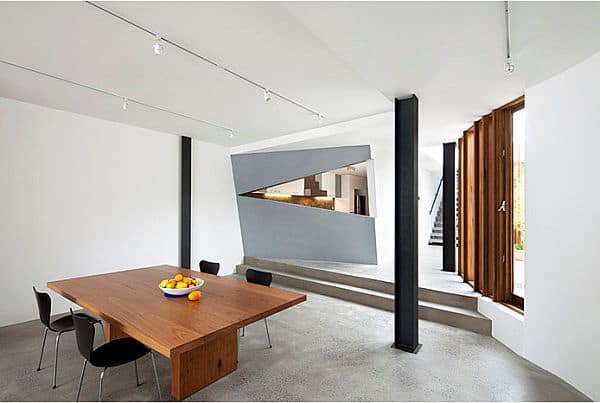Table Of Content

Here’s a selection of asymmetrical balance in use on different visual niches. Get a pen and paper and draw three shapes; a circle, a square, and a blob. Now draw a line that runs through the center from top to bottom on the three shapes.
Symmetry vs. asymmetry
He could have used symmetry – made characters more similar and had them face each other from a similar position. Also if they are pointing in some direction we will feel inclined to look that way ourselves and see just what they are pointing at. Reflection symmetry (otherwise known as bilateral symmetry) is the type of symmetry we were refereeing to earlier in the text while explaining Taj Mahal and the Proportion of the Man. This type of symmetry is what comes to mind most often when one mentions the word symmetry.
Silversea Reveals Details of Silver Nova's Asymmetrical Design - Luxury Travel Advisor
Silversea Reveals Details of Silver Nova's Asymmetrical Design.
Posted: Thu, 28 Apr 2022 07:00:00 GMT [source]
A formula for perfect balance
Theory: Aiding Asymmetrical Balance with Frame Data - Game Developer
Theory: Aiding Asymmetrical Balance with Frame Data.
Posted: Mon, 27 Apr 2015 07:00:00 GMT [source]
Of course, it’s easier to create balance in a symmetrical layout than asymmetrical design. All it takes is putting the same objects on both sides of the image. But symmetrical balance is also less creative and exciting than asymmetric balance.
Arrangement by Color:
Additionally, you can use lighting to draw attention to focal points in your interior design, such as artwork or architectural features. For instance, you might use wall sconces to highlight a piece of art or use track lighting to illuminate a beautiful built-in bookcase. By strategically placing lights throughout your living space, you can create an engaging and balanced environment that embraces asymmetry.
Design 101: Asymmetrical and Symmetrical Balance

Place the most essential elements along these lines or at their intersections to create an asymmetrical, visually appealing design. Symmetrical balance, characterized by evenly distributed elements, conveys a sense of stability and formality. Asymmetrical balance, characterized by the uneven distribution of elements in a design, provides a sense of dynamism and excitement. Understanding these principles allows designers to manipulate the viewer’s visual journey to create emphasis and elicit emotional responses. Ignoring them, however, can lead to chaotic, confusing, or boring designs. Asymmetrical balance results from unequal visual weight on each side of the composition.
The more you do that, the more you'll trust your own judgment when it comes to any design decision you have to make. Designers often use reflection symmetry to give equal weight to either side, or to create an entertaining visual effect. Fortunately, symmetrical design does not depend on identical mirroring. It’s only important to get close to the effect – exactitude is not necessary. Remember, you can manipulate the user’s eye easily without worrying about geometric perfection as a consideration in your design.
Usually, the greater the visual weight, the greater the importance of the object portrayed. If all the parts of your design are of equal weight, you will present a balanced, engaging, aesthetically pleasing composition. National Geographic frequently uses asymmetrical balance in its cover designs.
It would not be a successfully asymmetrical balance if van Gogh put both the sun and tree on the right side of the page. Complexity and simplicity is a visual technique that contrasts to balance asymmetry, using textures and details in different capacities. The idea is that one area of the design is complex while the opposite side is simple.
Interior Decorator Cost vs. Havenly Online Interior Designer Cost
Different textures, furniture, and varying heights bring a unique character to each room, engaging the eye in a lively dance of elements. This dynamism fosters an environment that is visually stimulating and, thus, never dull or ordinary. In an era that celebrates individuality and personality-driven spaces, asymmetrical interior design has emerged as a refreshing departure from traditional symmetry within your home. This innovative approach balances creativity and harmony, creating dynamic spaces that resonate with modern style. Whether it’s the casual elegance, the opportunity for personal expression, or its alignment with sustainability, asymmetry shapes our homes in intriguing ways.
Using different shapes will create an intriguing and harmonious design that embraces asymmetry. When done right, asymmetrical designs can make your interior feel dynamic, engaging, and visually appealing. In this blog post, we will explore the fascinating world of asymmetrical balance in interior design and discuss how you can use this concept to transform your home. The following technique to create asymmetrical balance is color and size. Using contrasting colors and different sized elements helps the visual balance of your designs with an asymmetric feel. Here are a couple of Visme templates using this visual technique.
There are many examples of symmetrical balance in both man-made art and works of nature, such as a flower. If you’re in need of a more formal, harmonious, aesthetically-pleasing structure, using symmetrically-balanced design would be a good course of action. However, do not forget that sometimes the calm and serenity of this type of design may not be as remarkable as you may need it to be. As we can see, asymmetrically and symmetrically balanced designs can be used in very distinct ways. Observe the wings of a butterfly – they are vividly colored and fragile, and both wings are colored in the very same way, the patterns and shapes matching perfectly. Balance can be found everywhere in the physical world, in greater or lesser degrees, and great masters have been implementing it in their work since forever.
Additional contributions are greatly desired, especially 3-view drawings of unusualdesigns. Please email scans to Conceptual Research Corporationor mail them to CRC at PO Box 5429, Playa del Rey, CA 90296. Designer Pamela Shamshiri recently brought her own historic R.
Balance means the two sides of your page should be designed with respect to how they impact each other. Balance doesn’t depend on whether the elements on both sides of your design are the same or different. What matters is whether both sides have equal or unequal visual weight.
You don’t use formulas to calculate whether everything is in balance. Rather, you use your eye to determine whether a composition is balanced. The first three letters are noticeably wider than the last three letters, creating a sense of greater visual weight in the first half of the wordmark. Think of mosaic balance as organized chaos that might look like noise, but actually creates balance thanks to the absence of a distinct focal point. Symmetry is the visual quality of repeating parts of an image across an axis, along a path or around a center. In this infographic, the asymmetric balance is more evident than above.

No comments:
Post a Comment